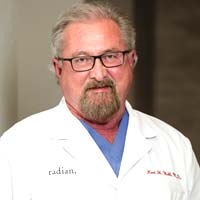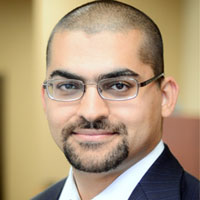Robotic hair transplants
Around the
age of 50 years old around 80% of men experience at least some type of minor
hair loss. While the majority of men will not lose their entire head of hair to
hair loss and balding, it can lead to a loss in confidence as hair continues to
thin. The process of getting traditional hair transplant is a popular option among men for its natural look. The problem with these hair transplants
however is that they involve a painful surgery which requires some recovery
time. With the help of a new high-tech solution called robotic hair
transplants, this process can be avoided and men can still receive the same
results as traditional hair transplants.
The
high-tech procedure which is otherwise called as the Artas robot automated hair
system, works similarly to a hair transplant but with a much greater precision.
The automated robot system will extract hair follicles from the back of the
head to transplant them into the thinning areas with a guided design system.
Unlike a
traditional hair transplant where follicles are taken out of a donor strip
which can leave a scar, the Artas option is far less painful, does not leave a
scar and offers a much shorter recovery time through the very precise nature of
the hair removal.
The robot
will precision measured each follicle to identify the types of hair follicles
which will be the best for transplant. By instantly measuring the strength of
the hair and the angle of the hair growth it's much more possible to avoid
damage to the follicle during the harvesting process and to produce better
results than a traditional hair transplant.
New hair
transplants begin growing in just six months and full results from the robotic
version of the surgery can be seen after the first year of growth. The main
advantage to this procedure is that it looks far more natural than traditional
hair transplants and it is absolutely painless. The robotic hair transplant
method can be used with both men and women and it presents a revolution in hair
transplant technology.
Hairfear - 07-12-2016
Frequently asked questions about hair transplant procedures
How much does a hair transplant cost?
Hair transplants can vary in price based off of the area in the world that you are interested in getting a hair transplant as well as the size of the area where you may need a hair transplant. Experienced doctors in the United States will often charge some of the highest prices for a hair transplant worldwide and this is why so many travelers make the move to other parts the world like Turkey, India, Thailand, Mexico...etc for their hair transplants.
Will a hair transplant hurt?
Although hair transplants may look like a particularly
unpleasant or painful experience is actually very little discomfort involved
with the surgery itself. Hair transplants are always done under an anesthetic so there's absolutely zero pain during the treatment itself. Many people actually relate the process as being very similar to going to the dentist for filling or root canal. Mild pain can persist over the course of postop treatment but he generally just resumes for a few days.
Who can deliver the best surgery?
It's usually best to consider working with surgeons who have and IAHRS certification or international alliance of hair restoration surgeons recognition. IAHRS can often deliver recommendations for the best surgeons in each particular area.
Is this scarring noticeable?
Any type of hair transplant will require the use of incisions throughout the scalp. There can also sometimes be a small scar from the donor area towards the back of the scalp. Asking to look at photos of the surgeon's previous work will help you to see roughly how bad the scarring could be. In most cases an experienced professional can limit the look of scarring and noticeable marks from the surgery.
How long does it take for the hair to grow?
In most cases hair growth will start within eight months and you can start to see a full effect from the hair transplant after a full year. The initial signs of growth can usually start between 3 to 4 months after the surgery.
Are the results permanent?
The hair follicles that are transplanted are generally the ones which are genetically resistant against the symptoms of baldness. As long as you receive hair loss treatment later in your life after the symptoms of balding have started to subside, you can have a better chance at permanent results.
While everyone know you've had surgery?
If you want to limit the chance that people may find out about your surgery it's important to give at least three weeks of healing as the surgical area will be affected and red just after surgery. After around a month of healing it can look far less noticeable. You could consider wearing a hat while time passes or opting for some extra time off if possible.
How long should I rest after surgery?
It's recommended to rest for at least a few days after surgery so that your body can recover. Trenton to over exert yourself and limit sexual activity, running in the gym for around 10 days after surgery.
Is it possible to lose more hair as a result of surgery?
There is always a chance of shock loss which happens when the hair is weak and miniaturizing after the surgery. As long as the surgeon is choosing the correct hair follicles and performing the surgery well it's possible to minimize the chance of this happening however.
Will I need another hair transplant?
The need for another transplant really depends on the individual. With a solid foundation surgery and working to potentially bolster results with drug therapy, you can improve the stability of the hair that was transplanted as well as prevent further loss. Getting a hair transplant early
on in your 20s or early on in life could lead to needing long-term transplants as hair loss can be progressive.







